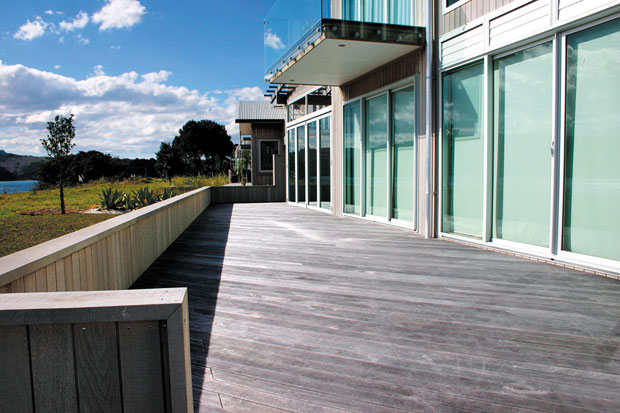‘Weather’ or not to finish
A backyard refresh or upgrade can bring comfort, energy, fun and relaxation into the space for the family to enjoy. But before you start work or purchase materials, you need to consider the maintenance and upkeep of the project for years down the road. Sure, you will enjoy the project tremendously the first year it’s completed. But if staining or sanding aren’t something you’re willing to do to keep the deck looking sharp, you need to carefully consider your choice of deck material.
Many homeowners choose to install a deck in their backyard as an outdoor living space. Decks are extremely versatile. There are a variety of material options for decks, and these materials all differ in the upkeep they require.
Synthetic or composite deck materials do not require finishing, which leaves homeowners without the option to change the look of the deck over time to match a new house color, new outdoor furniture, landscaping or just to give the deck a fresh look. A composite deck — like any material — will need cleaning to help control mold and remove dirt.
Decks made from wood products, however, give homeowners flexibility to match the deck to the area surrounding it. Wood species like Western Red Cedar have natural preservative oils that preserve the wood, even in extreme weather. Cedar also gives homeowners a choice to let the wood weather naturally turning a soft, silver-gray color. And if the mood strikes, homeowners can change the color of the deck by sanding and refinishing. Western Red Cedar Lumber Association has information and advice about weathering or finishing cedar decks at www.wrcla.org.
Finishing wood decks is another option, and gives homeowners just about any choice in color they want. Scott Gibson, from Professional Deck Builder Magazine has a few tips for homeowners who want to finish their wood deck.

• On a new deck that is to be stained, apply the stain to all sides of the deck boards before installation. This step helps prevent moisture penetration into the wood, which could compromise any finish.
• Make certain the deck is clean, completely dry and free from mold or mildew. A mild, oxygen bleach solution is recommended for treating mold and mildew. Do not increase the recommended strength of this solution, and it needs to be left on the deck surface for about 30 minutes to be effective.
• Use a wood brightener to prep it. “No step is skipped more than this one,” Gibson says. “It’s by far the easiest step to do, and it will have a dramatic effect on the final result.”
• Choose a stain. Most builders and experts recommend semi-transparent stains, because they contain pigments that help block sunlight and protect the wood surface. They also last longer than transparent stains. Many products also contain water repellents, mildew-fighting properties and fungicides. Latex stains should be avoided as they usually form a film, which can flake over time.
• Transparent stains or water-repellant stains are perfect for homeowners wanting to keep the natural look. They contain a UV blocker or absorber to help reduce damage from sunlight. They are also good for newly manufactured or restored cedar decks. Homeowners should note that transparent stains don’t last a long time, especially when exposed to a lot of sun.
Whether you choose to let your deck weather naturally, or finish it to the exact look to match your home, it’s important to take into consideration the future maintenance and color flexibility provided by decking materials before you begin the project. And with your deck complete, in no time at all everyone in the family will be enjoying the new outdoor space, and the aura it brings to the backyard.
This article is courtesy of Brandpoint.